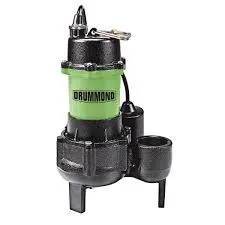Mongolian
- Afrikaans
- Albanian
- Amharic
- Arabic
- Armenian
- Azerbaijani
- Basque
- Belarusian
- Bengali
- Bosnian
- Bulgarian
- Catalan
- Cebuano
- Corsican
- Croatian
- Czech
- Danish
- Dutch
- English
- Esperanto
- Estonian
- Finnish
- French
- Frisian
- Galician
- Georgian
- German
- Greek
- Gujarati
- Haitian Creole
- hausa
- hawaiian
- Hebrew
- Hindi
- Miao
- Hungarian
- Icelandic
- igbo
- Indonesian
- irish
- Italian
- Japanese
- Javanese
- Kannada
- kazakh
- Khmer
- Rwandese
- Korean
- Kurdish
- Kyrgyz
- Lao
- Latin
- Latvian
- Lithuanian
- Luxembourgish
- Macedonian
- Malgashi
- Malay
- Malayalam
- Maltese
- Maori
- Marathi
- Mongolian
- Myanmar
- Nepali
- Norwegian
- Norwegian
- Occitan
- Pashto
- Persian
- Polish
- Portuguese
- Punjabi
- Romanian
- Russian
- Samoan
- Scottish Gaelic
- Serbian
- Sesotho
- Shona
- Sindhi
- Sinhala
- Slovak
- Slovenian
- Somali
- Spanish
- Sundanese
- Swahili
- Swedish
- Tagalog
- Tajik
- Tamil
- Tatar
- Telugu
- Thai
- Turkish
- Turkmen
- Ukrainian
- Urdu
- Uighur
- Uzbek
- Vietnamese
- Welsh
- Bantu
- Yiddish
- Yoruba
- Zulu
Telephone: +86 13120555503
Email: frank@cypump.com
12-р сар . 04, 2024 16:25 Back to list
Investigating the Effectiveness and Uses of Mixed Flow Systems in Various Industries
Exploring the Efficiency and Applications of Mixed Flow Systems
In modern engineering and industrial processes, the pursuit of efficiency and effectiveness is paramount. One intriguing concept that has garnered significant attention is mixed flow systems. These systems combine various flow patterns and dynamics, allowing for enhanced performance in a variety of applications. Understanding the principles behind mixed flow systems, their efficiency, and their applications can lead to innovative solutions across multiple sectors.
Understanding Mixed Flow Systems
Mixed flow systems are characterized by the simultaneous presence of different flow patterns, such as laminar and turbulent flows. In engineering, this can involve the integration of various fluids moving through a channel or a reactor, where the interaction of these flows leads to improved mixing, mass transfer, and overall reaction rates. The mixing can occur in multiple dimensions, making it essential for processes that require superior homogeneity and efficiency.
The design of mixed flow systems often incorporates elements such as baffles, impellers, or nozzles, which facilitate the interaction of various fluid streams. The efficiency of these systems is measured in terms of several parameters, including mixing time, energy consumption, and the quality of the final product. By optimizing these factors, engineers can design systems that outperform traditional flow methods.
Efficiency of Mixed Flow Systems
One of the primary advantages of mixed flow systems is their ability to enhance operational efficiency. For instance, in chemical reactors, achieving a uniform concentration of reactants can significantly improve the rate of reaction. This is crucial in industries like pharmaceuticals or petrochemicals, where reaction rates directly affect production yields and costs.
Moreover, mixed flow systems can lead to reduced energy consumption. Traditional systems may require extensive energy input to achieve adequate mixing or heat transfer. In contrast, the efficient design of mixed flow systems can optimize energy usage, leading to cost savings and a lower environmental footprint. This is particularly relevant in the context of sustainability, where reducing energy consumption aligns with global initiatives toward eco-friendly processes.
exploring the efficiency and applications of mixed flow ...

Applications Across Industries
The versatility of mixed flow systems allows for their application in a multitude of industries. In the food processing sector, for example, the mixing of ingredients is critical for ensuring consistent quality and flavor. Mixed flow technology can enhance the dispersion of flavors, colors, and preservatives, improving product uniformity.
In wastewater treatment, mixed flow systems are employed to promote the efficient mixing of chemicals with wastewater, enhancing the treatment process. By optimizing the flow patterns, these systems can improve the degradation of pollutants, leading to cleaner effluents and meeting environmental regulations.
The pharmaceutical industry also benefits from mixed flow systems. In drug formulation processes, achieving a homogenous mixture of active ingredients is crucial for efficacy and safety. Mixed flow techniques can enhance the blending of powders and liquids, resulting in more consistent dosing and improved therapeutic outcomes.
Furthermore, in the aerospace and automotive sectors, mixed flow systems are utilized in wind tunnels and aerodynamic testing. The ability to simulate various flow conditions allows engineers to study the effects of air movement over surfaces, leading to innovations in design and performance.
Conclusion
In conclusion, mixed flow systems present an exciting avenue for improving efficiency across diverse applications. Their ability to combine different flow dynamics not only enhances operational performance but also aligns with the goals of sustainability and cost-effectiveness. As industries continue to seek innovative solutions to meet growing demands and environmental challenges, the exploration of mixed flow systems will likely play a crucial role in shaping the future of engineering and manufacturing practices. By leveraging the benefits of mixed flow technologies, we can pave the way for more efficient, productive, and sustainable industrial systems.
-
Horizontal Split Case Pump with GPT-4 Turbo | High Efficiency
NewsAug.01,2025
-
ISG Series Pipeline Pump - Chi Yuan Pumps | High Efficiency, Durable Design
NewsAug.01,2025
-
Advanced Flue Gas Desulfurization Pump with GPT-4 Turbo | Durable & Efficient
NewsJul.31,2025
-
ISG Series Vertical Pipeline Pump - Chi Yuan Pumps | Advanced Hydraulic Design&Durable Construction
NewsJul.31,2025
-
ISG Series Vertical Pipeline Pump - Chi Yuan Pumps | Energy Efficient & Low Noise
NewsJul.31,2025
-
pipeline pump - Chi Yuan Pumps Co., LTD.|High Efficiency&Low Noise
NewsJul.31,2025










